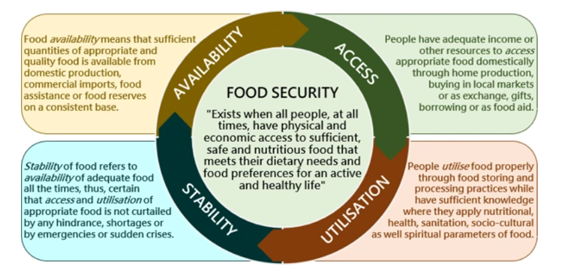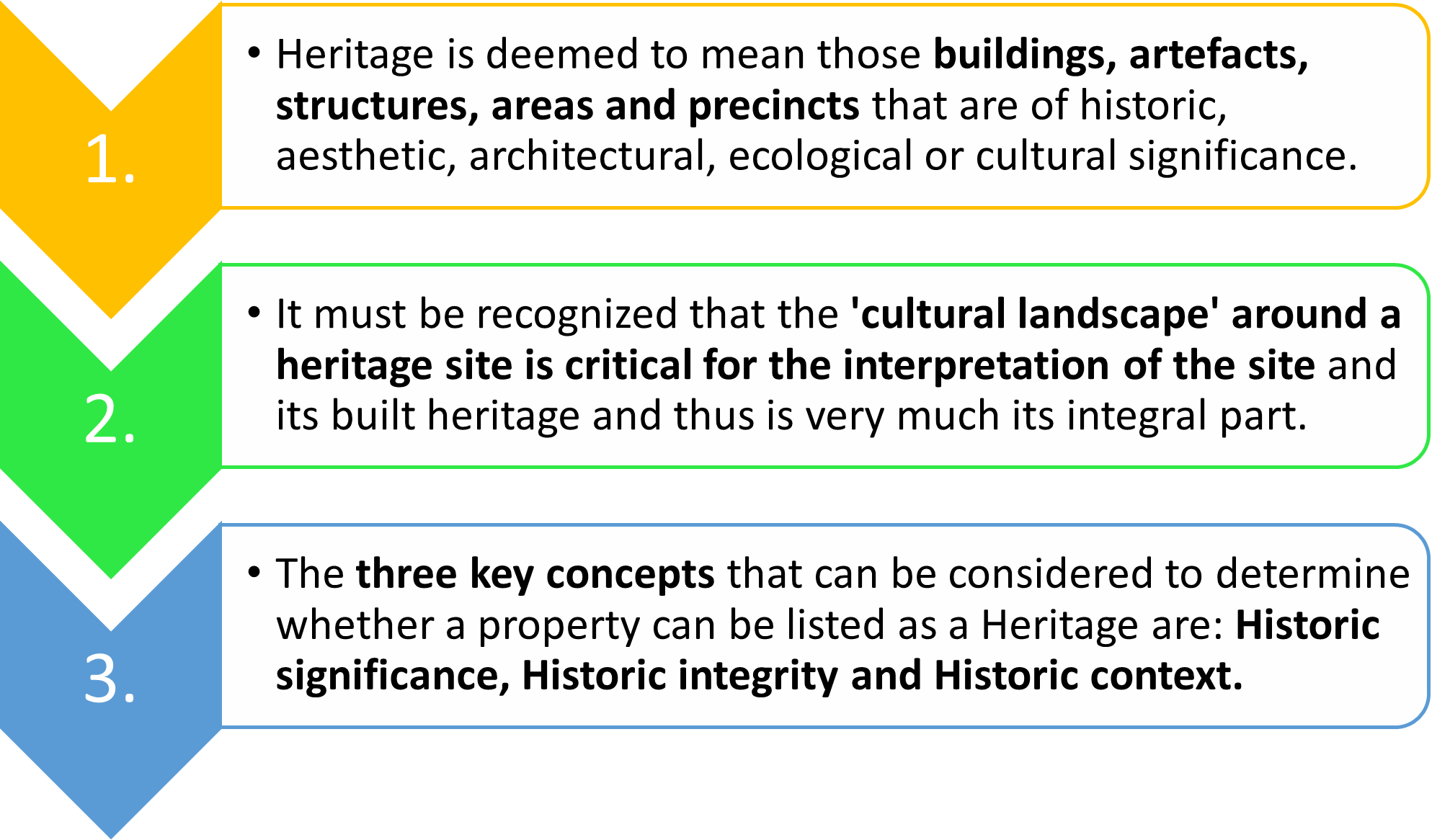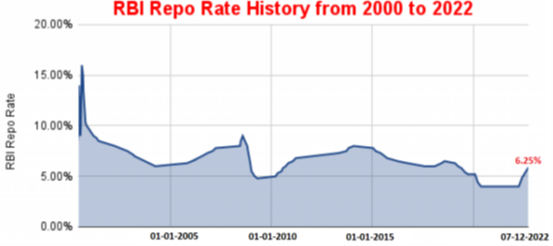Wednesday, 14th December 2022
Still a nightmare for domestic violence survivors:
Exam View:
In News: While sharing experiences of violence was a powerful step for women, accessing services and support often resulted in uncertainty, fear and disappointment.
It can be defined as a pattern of behaviour in any relationship that is used to gain or maintain power and control over an intimate partner. This includes any behaviours that frighten, intimidate, terrorize, manipulate, hurt, humiliate, blame, injure, or wound someone.
Domestic violence is a punishable offence under the Protection of Women from the Domestic Violence Act 2005 (PWDVA). It is a violation of human rights.
Type of domestic violence:
- Physical abuse: It means any act or conduct which is of such a nature as to cause bodily pain, harm, or danger to life, limb, or health or impair the health.
- Sexual abuse: It includes any conduct of a sexual nature that abuses, humiliates, degrades, or otherwise violates the dignity of a woman.
- Economic abuse: It includes activities such as not providing money for maintaining the woman or her children, not providing food, clothes, medicines, etc., deprivation of all or any economic or financial resources etc.
- Verbal and emotional abuse – It includes Insults, ridicule, humiliation, name calling and insults or ridicule, especially with regard to not having a child or a male child.
Constitutional Provisions for the protection of women:
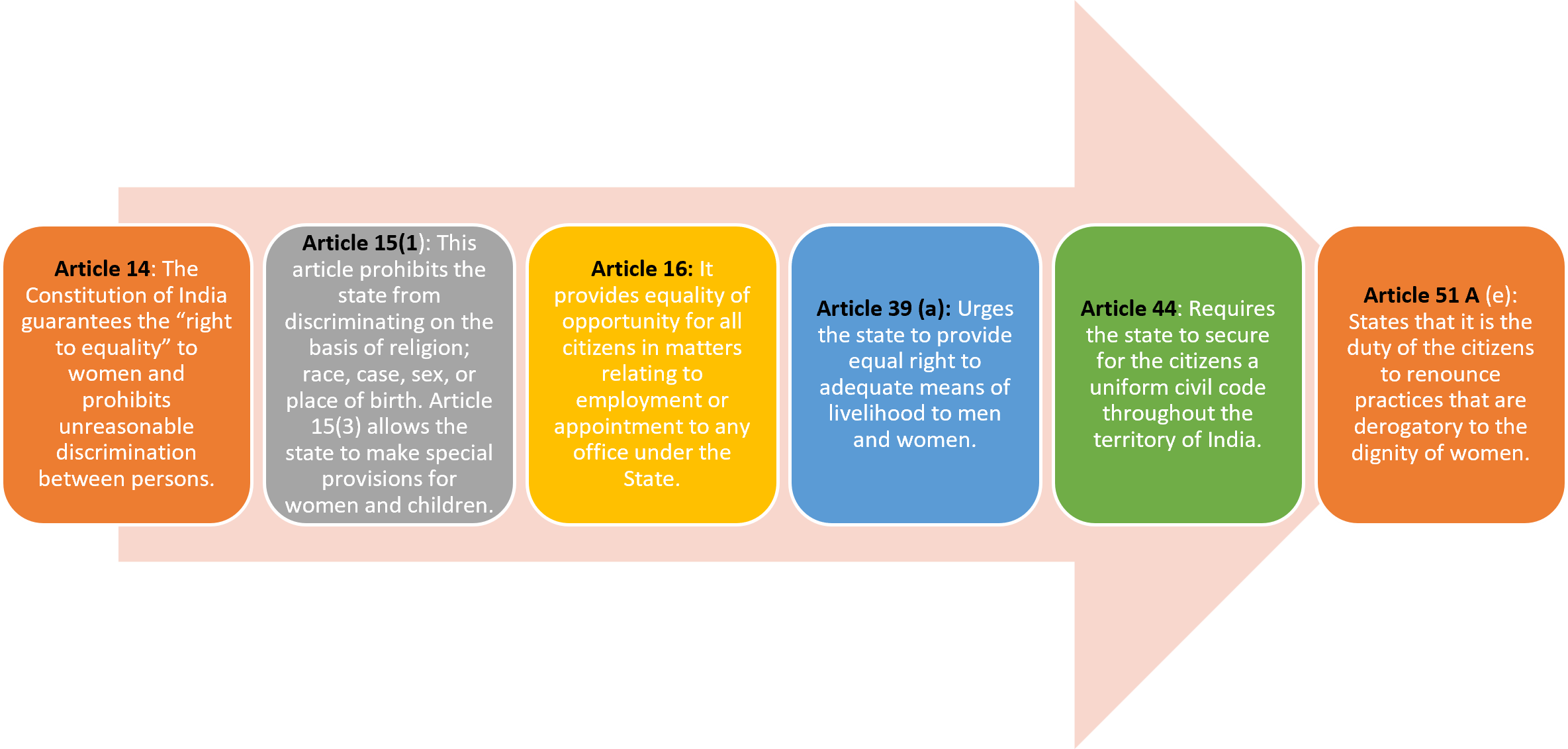
Challenges:
- National Family Health Survey-5 (2019-21): It reveals that 32% of ever-married women aged 18-49 years have ever experienced emotional, physical, or sexual violence. only 14% of women who have experienced domestic violence have sought help (much lower in the rural areas).
- More rural than urban women: reporting experiences of domestic violence.
- Domestic violence: Almost a third of women are subject to domestic violence.
- Role of the police: Women who reported experiences of violence to the police were cynical about the outcome. Across the States, it is observed that the police were more likely to send women back to violent households to reconcile with the perpetrator use violence against perpetrators as a deterrent instead of filing an official complaint.
- Protection officers: Several States are yet to implement Protection officers. And where they are in post, they are under-resourced, under-skilled and overworked, making their remit impossible.
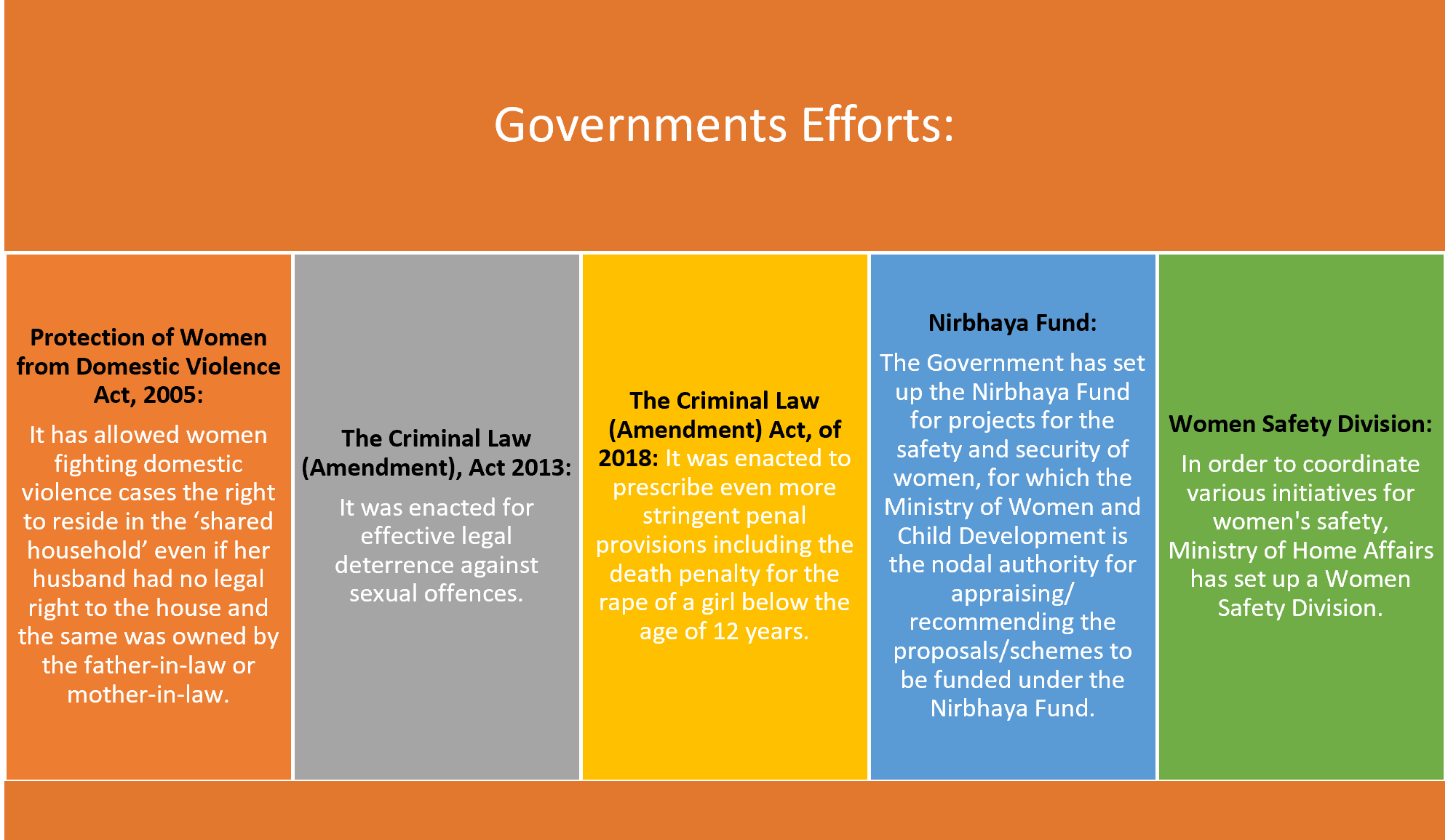
Way Forward:
Access to legal justice through the courts was a material possibility only for women with independent wealth and connections or those supported by specialist non-governmental organizations.
Financial Independence: Improving women’s access to paid employment.
Helplines, psychosocial support and online counselling should be boosted, using technology-based solutions such as SMS, online tools and networks to expand social support, and to reach women with no access to phones or internet.
Legislature recognises that domestic violence is a crime, and civil remedies exist through protection orders, managing the fallout of domestic violence is still being subcontracted to survivors and the family.
Police and justice services should ensure that incidents of violence against women and girls are given high priority with no impunity for perpetrators.
The increase in violence against women should be dealt with urgently with measures embedded in economic support and stimulus packages that meet the gravity and scale of the challenge and reflect the needs of women who face multiple forms of discrimination. Grassroots and women’s organizations and communities need to be supported strongly in their current frontline role.
Ref: The Hindu
India-China Tawang crisis - Edukemy Current Affairs
In News:
Soldiers of India and China clashed in an area called Yangtse, in the upper reaches of Tawang sector in Arunachal Pradesh, which injured around 20 Indian soldiers and a much higher number of Chinese soldiers.
About Indo-China border conflicts:
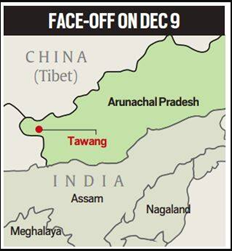
- China claims the entire Arunachal Pradesh as its territory, which has often caused border clashes between the two countries in the eastern sector.
- Clash took place recently after PLA troops tried to transgress the LAC in the Yangtse area of the Tawang Sector and unilaterally change the status quo.
- The history of Indo China border tussle has been long drawn, with several events of major border conflicts.
- Nathu La conflict of 1967, where Chinese troops infiltrated the region in Sikkim.
- Cho La conflict of 1967 occurred at the Cho La Pass, which connects the Indian state of Sikkim with China's Tibet Autonomous Region.
- 1987 standoff at Arunachal Border was seen when India granted statehood to Arunachal Pradesh.
- Sumdorong Chu standoff of 1987 in Arunachal Pradesh is said to be one of those incidents when India and China were on the verge of war.
- Depsang conflict of 2013 started in the Daulat Beg Oldi (DBO) which is claimed by both sides.
- Chumar standoff 2014 due to Chinese construction of a highway that crossed to the Indian Territory.
- Doklam Standoff 2017 due to the destruction of a few Bhutanese Army bunkers by China and the beginning of road construction through Doklam.
- Galwan Valley Clash of 2020 where Indian and Chinese troops scuffled at Pangong Tso in Ladakh
What are the reasons for sustained border dispute between India and China?
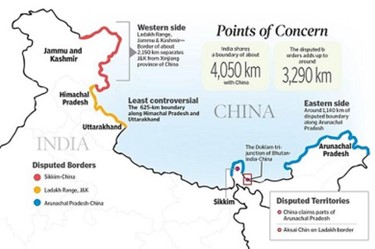
- The root cause is an ill-defined, 3,440km (2,100-mile)-long disputed border. The border between India and China is demarcated by McMohan line which China neither approves nor accepts.
- Rivers, lakes and snowcaps along the frontier mean the line of actual control can shift, bringing soldiers face to face at many points, sparking a confrontation.
- Competing infrastructure projects being built by both the sides along the disputed LAC is another cause of frequent conflicts. India's construction of a new road to a high-altitude air base is seen as one of the main triggers for a deadly 2020 clash with Chinese troops.
- The intention behind recent conflict appears to be to extend the points of confrontation and keep the issue of India China border alive at a time when the world is engaged in tackling crisis emanating from Ukraine war.
- Within Tawang, there are three “agreed areas” of differing Indian and Chinese perceptions of LAC. Yangtse is one of them. As a result, it has been a site of regular “physical contact” between the Indian Army and the PLA.
What are the risks associated with continued border conflicts for India?
- De-escalation of tensions envisaged after the clash has proved to be elusive as infrastructure development by China has continued, including building of roads and bridges over Pangong Tso.
- The deployment of troops in the forward areas of the LAC in areas such as Ladakh has become a permanent feature.
- India has been sandwiched between two geopolitically volatile neighbours, leading to border security threats on both the flanks.
Source: https://indianexpress.com/article/explained/the-new-lac-crisis-where-why-and-what-now-8322970/
National Policy of Rare Diseases (NPRD)
In news
A Rajya Sabha MP recently raised concerns over the benefits of the National Policy of Rare Diseases (NPRD) not reaching any patient with rare diseases even after several months since its introduction.
About Rare Disease
- WHO defines a rare disease as an often debilitating lifelong disease or disorder with a prevalence of 1 or less, per 1000 population.
- The European Union defines rare diseases as life-threatening or chronically debilitating conditions affecting no more than 5 in 10,000 people.
Issues associated with Rare Diseases
- Early diagnosis of rare diseases is a challenge owing to multiple factors that include:
- lack of awareness among primary care physicians.
- lack of adequate screening and diagnostic facilities.
- Challenges in research and development due to the little natural history of these diseases and small patient pool.
- High prices of treatment and drugs by manufacturers to recoup the cost of research and development.
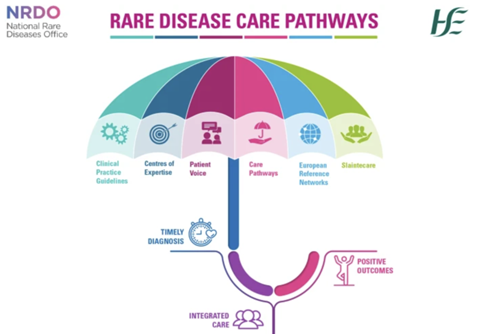
About National Policy for Rare Diseases, 2021
- The rare diseases have been identified and categorised into 3 groups:
- Group 1: Disorders amenable to one-time curative treatment.
- Group-2: Diseases requiring long-term/lifelong treatment having a relatively lower cost of treatment and benefit have been documented in the literature and annual or more frequent surveillance is required.
- Group 3:- Diseases for which definitive treatment is available but challenges are to make an optimal patient selection for benefit, very high cost and lifelong therapy.
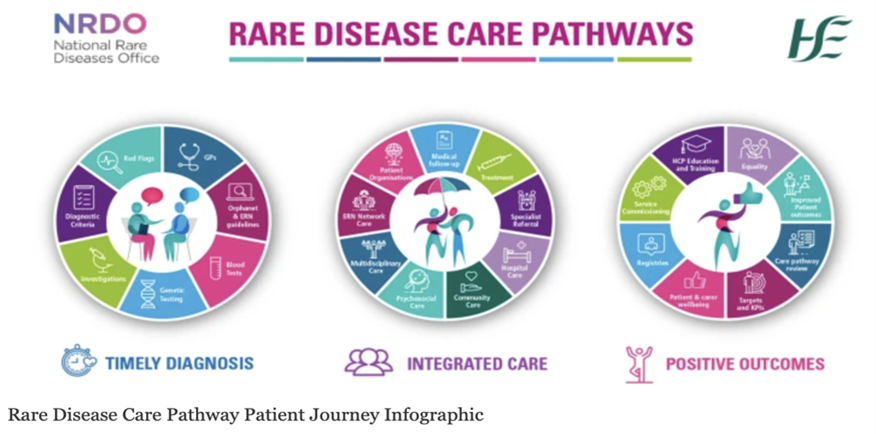
- Provision for financial support of up to Rs. 50 lakhs to the patients suffering from any category of Rare Diseases and for treatment in any of the Centre of Excellence (CoE) mentioned in NPRD-2021, outside the Umbrella Scheme of Rashtriya Arogaya Nidhi.
- Eight Centres of Excellence (CoEs) have been identified for diagnosis, prevention and treatment of rare diseases.
- Five Nidan Kendras have been set up for genetic testing and counselling services.
- Also, NPRD 2021 has provisions for promotion of research and development for diagnosis and treatment of rare diseases; promotion of local development and manufacture of drugs and creation of a conducive environment for indigenous manufacturing of drugs for rare diseases at affordable prices.
Source
Image source
India and OIC - Edukemy Current Affairs
In News:
- India criticizes the OIC over visit to PoK.
About the News:
- The Secretary-General of the Organisation of Islamic Cooperation (OIC) was recently on a three-day visit to Pakistan-occupied Kashmir (PoK).
- India has criticised the visit by officials of OIC and denounced the credibility of organisation on the grounds of interference and meddling in India’s internal affairs.
- In recent years, OIC has been criticised for becoming a “mouthpiece” of Pakistan besides taking a blatantly communal, partisan and factually incorrect approach to issues.
- Previously, OIC has condemned and denounced the national party forming government in India for supporting a spate of hatred and defamation of Islam in India.
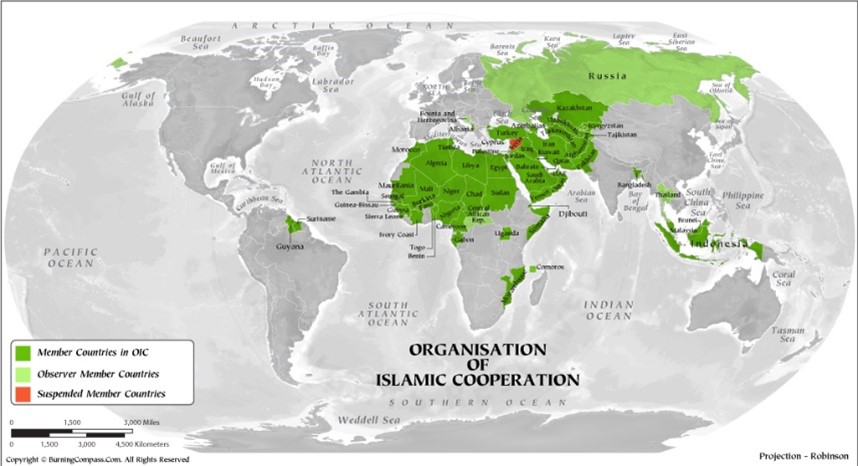
The organisation of Islamic Cooperation (OIC):
- Background: OIC was established by the First Islamic Summit Conference held in Rabat, Morocco, in 1969 post the arson incident at Al-Aqsa Mosque in Jerusalem.
- Voice of Muslims: The OIC claims to be the “collective voice of the Muslim world” and aims to safeguard and protect the interests of the Muslim world in the spirit of promoting international peace and harmony among various people of the world.
- Outreach: It is the second largest inter-governmental organisation in the world after the United Nations.
- Membership:
- Full-time: It has a reserved membership of 57 Muslim-majority countries spread across four continents.
- Observer countries: It also gives status to Central African Republic, Russia, Thailand, Bosnia & Herzegovina, and the unrecognised Turkish Cypriot “state”
- Official profile: The permanent secretariat of the OIC is in Jeddah and the current secretary general of the OIC is the Chadian diplomat and politician Hissein Brahim Taha.
Relationship with India
- Background: India’s association with the OIC grouping has been of sweet and sour since it has good relations with the United Arab Emirates (UAE) and Saudi Arabia but its membership and engagement has been constantly challenged by Pakistan.
- India at OIC: India addressed the OIC Plenary of Foreign Ministers in Abu Dhabi as a guest of honour in 2019 on invitation of United Arab Emirates.
- Kashmir issue: OIC has been time and again questioning the status of Jammu & Kashmir often at the insistence of Pakistan thus leading to coldness in its engagement with India.
- Advantage factor: While the OIC is mainly controlled by Saudi Arabia, Pakistan, as the only Islamic country with nuclear weapons, has had a powerful say in the organisation from the beginning.
- Diplomatic hurdle: India has excellent relations individually with almost all member nations — and thus cannot afford to not take the statements issued by the group as a whole seriously.
Source: The Hindu
Mahakavi Subramania Bharati - Edukemy Current Affairs
Why in news?
- Recently, Chief Minister N. Rangasamy paid tributes to Mahakavi Subramania Bharati on his 141st birth anniversary.
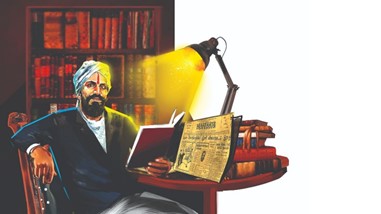

Involvement and Contribution during Nationalist Period
- He formally joined the Tamil daily newspaper Swadesamitran after
- His involvement in the extremist wing of the Indian National Congress (INC) party was an outcome of his exposure to political affairs.
- He had a secular, against casteism and sexism, and pan-Indian vision of nationalism.
- Bharathi printed the weekly newspaper titled "India" on red paper to demonstrate its fervour for revolution.
- It became the first paper in Tamil Nadu to publish Political cartoons.
- He also published and edited a few other journals like “Vijaya”.
- He attended various annual sessions of INCand involved himself in discussing national issues with extremist leaders like Bipin Chandra Pal, G. Tilak and V.V.S. Iyer.
- His participation in and activities at the INC sessions in Benaras (1905) and Surat (1907) left many national leaders in awe of his patriotic fervour.
- In 1908, he published the sensational “Sudesa Geethangal”.
- A fascinating illustration of the poet's political philosophy can be found in Bharati's response to the 1917 Russian Revolutions in the poem "Pudiya Russia" (also known as "The New Russia").
- He was forced to flee and live in exile in the French territory of Pondicherry (now Puducherry) from 1910 to 1919.
Role as a social reformer
- He opposed the caste systemand consistently spoke about women’s issues.
- He was influenced by a disciple of Vivekananda, Sister Nivedita.
- He spoke out against social issuessuch as child marriage, untouchability through his writings.
Legacy:
- The copyright for his works was purchased from them by the Madras government in 1949, and Tamil Nadu's government made it public six years later.
- Bharathiyar is still a household name in Tamil Nadu, but he is not well known outside of the South.
- The government has given him numerous honours, including renaming streets in his honour, also translating his works into multiple languages.
Bharathi Award:
- Vanavil Cultural Centre instituted this award in 1994.
- It is conferred every year to eminent persons who have done extraordinary service in any field of social relevance.
International Bharati Festival
- This festival was organised by the Vanavil Cultural Centre (Tamil Nadu) marking his 138th birth anniversary in 2020.
- Bharathi Award for the year 2020: Scholar Shri Seeni Viswanathan.
Death: 11th September 1921
Content Source Link: The Hindu
Kakatiya Rudreshwara Temple - Edukemy Current Affairs
Context: Kakatiya Rudreshwara Temple, Telangana inscribed as UNESCO World Heritage Site

- The temple complexes of Kakatiyas have a distinct style, technology and decoration exhibiting the influence of the Kakatiyan sculptor.
- This temple was built during the Kakatiyan period (1123–1323 CE) by Racherla Rudra, a General of the Kakatiya King Ganapati Deva.
- Features
- The main temple faces east and stands on a 6-feet high star-shaped platform with aesthetically carved walls, pillars, and ceilings.
- The ceiling is octagonal with intricate craftsmanship over the architrave, with panels depicting Natya Siva Gajantaka, & Tripurantaka .
- The foundation of the temple is built using the ‘sandbox technique’ - unique to the Kakatiya Dynasty. In this technique, a pit is dug and filled with a mixture of sand-lime, jaggery, and Karakkaya (Terminalia Chebula),which makes the Ramappa Temple earthquake resistant.
- Other notable features are:
- Shikharam
- At the entrance of the temple, is the Nandi mandapa.
- decorated beams and pillars of carved granite and dolerite with a distinctive and pyramidal Vimana (horizontally stepped tower)
- The dvarapalakas, Krishna as Muralidhara and the Gopikavastrapaharana are creations of mirror-art over the black basalt.
Sources:
Image Source: UNESCO
6th schedule of the Constitution
Context: After its special status was removed, several political groups in Ladakh have been demanding that land, employment, and the cultural identity of Ladakh, should be protected under the Sixth Schedule.

- The Sixth Schedule under Article 244([Articles 244(2) and 275(1)]) provides for the formation of autonomous administrative divisions — Autonomous District Councils (ADCs) — that have some legislative, judicial, and administrative autonomy within a state.
- Passed by the Constituent Assembly in 1949, it seeks to safeguard the rights of tribal population through the Autonomous District Councils (ADC).
- The Sixth Schedule applies to the Northeastern states of Assam, Meghalaya, Mizoram (three Councils each), and Tripura (one Council).
- ADCs have up to 30 members with a term of five years, and can make laws, rules and regulations regarding land, forest, water, agriculture, village councils, health, sanitation, village- and town-level policing, inheritance, marriage and divorce, social customs and mining, etc.
- The governors of these states are empowered to reorganize boundaries of the tribal areas, increase or decrease the boundaries and unite two or more autonomous districts into one. They can also alter or change the names of autonomous regions without separate legislation.
Sources:
Image source: The Quint
District Disability Rehabilitation Centres (DDRC)
Context: Recently the House Panel noted that a casual approach was opted for setting up DDRCs.
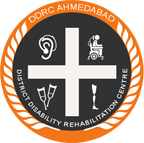
- District Disability Rehabilitation Centre (DDRC) provide comprehensive services to persons with disabilities and facilitates the creation of infrastructure and capacity building at the district level for awareness generation, rehabilitation and training of rehabilitation professionals.
- Nodal Ministry: Ministry of Social Justice & Empowerment
- DDRCs are run jointly by District Management Team headed by DM/Collector and a reputed NGO (Usually the Indian Red Cross Society).
- In the model DDRCs services like hearing aids test lab, speech therapy room, visual therapy room, psychologist room, physiotherapist room, gait practice parallel bar and telemedicine/teletherapy-like facilities shall be available.
- Besides, these DDRCs will also assist PwDs in registration in the UDID portal.
Constitutional and Legal Provisions:
- Article 14 puts emphasis on equality and Article 21 highlight the importance of right to dignified life.
The Rights of People with Disabilities Act, 2016 provides that “the appropriate Government shall ensure that the PWD enjoy the right to equality, life with dignity, and respect for his or her own integrity equally with others.”
Source:
Angkor Wat Temple complex - Edukemy Current Affairs
Context: The Angkor Wat temple complex in Cambodia is being restored by India.
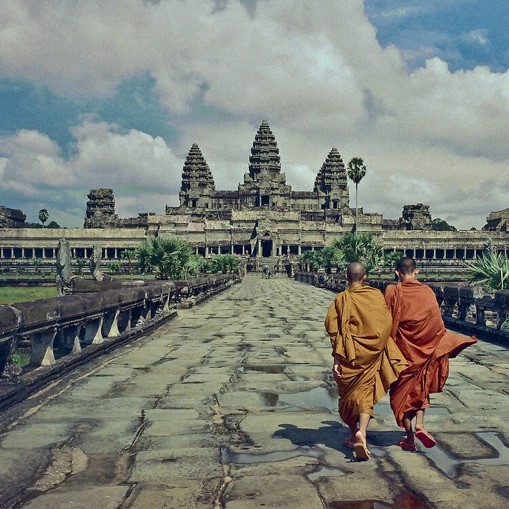
- It is one of the largest religious monuments in the world.
- Under the rule of Khmer Empire, the temple was constructed and dedicated to Lord Vishnu
- King Suryavarnam II built it in Yasodharapura in 12th century and is situated today in present-day Angkor.
- It was, however, gradually transformed into a mausoleum and then a Buddhist temple towards the end of the 12th century.
- The five central towers of Angkor Wat symbolize the peaks of Mount Meru, which according to Hindu mythology is the dwelling place of the gods.
- The mountain is said to be surrounded by an ocean, and the complex’s enormous moat suggests the oceans at the edge of the world.
- The temple walls are covered with bas-relief sculptures of very high quality, representing Hindu gods and ancient Khmer scenes as well as scenes from the Mahabharata and the Ramayana.
- Angkor was inscribed in the World Heritage List in Danger on 14th December in 1992 and was removed in 2004.
Source:
Pradhan Mantri Adi Adarsh Gram Yojana (PMAAGY)
Why in news? Recently, Government has modified the earlier scheme of ‘Special Central Assistance to Tribal Sub-Scheme (SCA to TSS)’ with the nomenclature ‘Pradhan Mantri Adi Adarsh Gram Yojana (PMAAGY).
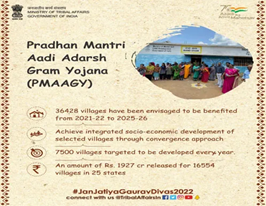
About:
- It supplements the efforts of State Governments for the development and welfare of tribal people by extending Special Central Assistance as an additive to the State Tribal Sub-Plan (TSP).
- It aims at mitigating gaps and providing basic infrastructure in villages with a significant tribal population in convergence with funds available under different schemes in Central Scheduled Tribe Component.
- The Scheme is a centrally sponsored scheme with a 100% grant from the government of India.
Source: The Hindu
Environment Education, Awareness and Training (EEAT)
Why in news? Recently Environment Education scheme has been revamped into Environment Education Programme.
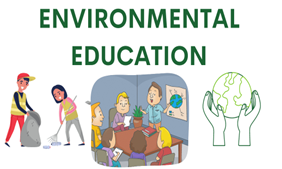
About:
- It is a Central Sector scheme implemented by the Ministry of Environment, Forest, and Climate Change.
- Objective: To promote environmental awareness and mobilize students’ participation in environment conservation.
- Under this Scheme, there are two major programmes namely Green Corps (NGC) Programme and National Nature Camping Programme (NNCP)
Source: PIB
Scramjet engine - Edukemy Current Affairs
Why in news? Recently, The Indian Space Research Organisation (ISRO) has successfully conduced the Hot Test of Scramjet Engine, a type of Air Breathing Engine.
About:
- A scramjet engine is an improvement over the ramjet engine as it efficiently operates at hypersonic speeds and allows supersonic combustion.
- Speed is greater than 6 Mach (Six times the speed of Sound).
- Scramjet engine designed by ISRO uses Hydrogen as fuel and Oxygen from the atmospheric air as the Oxidizer.
- much lighter, more efficient and cost-effective.
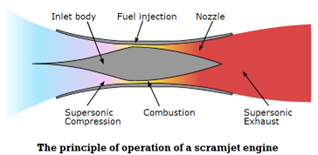
Source: Daily Excelsior
Sri Aurobindo - Edukemy Current Affairs
Why in news? Recently, Prime Minister participated in a programme commemorating Sri Aurobindo’s 150th birth anniversary.
About:
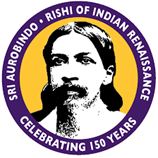
- Aurobindo Ghose was born in Calcutta on 15th August 1872. He was a yogi, seer, philosopher, poet, and Indian nationalist who propounded a philosophy of divine life on earth through spiritual evolution.
- Aurobindo’s pragmatic strategies to get rid of British rule marked him as “the Prophet of Indian Nationalism”.
- He started the patriotic journal Bande Mataram to propagate radical methods and revolutionary tactics instead of supplication.
Source: PIB
Scheme for Providing Education to Madrasas/Minorities (SPEMM)
Why in news? Recently, The Parliamentary Standing Committee on Social Justice and Empowerment pulled up the Union government for the delay in approving the continuation of the SPEMM.
About:

- The Department of School Education and Literacy under the Ministry of Education is an implementing Agency.
- SPEMM seeks to provide financial assistance to madrasas and minority institutes.
- The scheme has two sub-schemes:
- The Scheme for Providing Quality Education in Madrasas (SPQEM) and
- Infrastructure Development of Minority Institutes (IDMI)
Source: The Hindu
Malaria - Edukemy Current Affairs
Why in news? Recently, World Health Organization (WHO) has released the World Malaria Report 2022.
About:
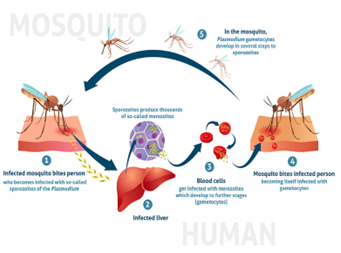
- It is a life-threatening mosquito borne blood disease caused by plasmodium parasites. It is predominantly found in the tropical and subtropical areas of Africa, South America as well as Asia.
- The parasites spread through the bites of infected female Anopheles mosquitoes.
Initiative:
- The WHO has identified 25 countries with the potential to eradicate malaria by 2025 under its ‘E-2025 Initiative’.
- India has set its goal to eliminate Malaria by 2027 three years ahead of 2024 which is the global deadline for the elimination of Malaria. It is designed based on the National Framework for Malaria Elimination (NFME)
Source: Website
Decarbonising Transport: 150 years of Kolkata tram
Background
Kolkata will celebrate 150 years of its iconic tram through Tramjatra (tram’s journey), which is a moving tram carnival that was started jointly by enthusiasts from Melbourne and Kolkata.
About Tramjatra:
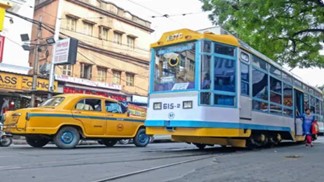
- Tramjatra is an international collaboration of trammies, artists, environmentalists, and tram-loving communities which seeks to educate people, particularly the younger generation, about climate change, air pollution, and sustainable development objectives with a focus on green mobility and Kolkata’s tram legacy.
- The theme of 2023 Tramjatra will be Heritage, Clean Air and Green Mobility
- Trams would be painted on the theme of historical trams, dangers posed by climate change and contemporary trams in a different regions of the world
- Trams are an emotional and sentimental heritage for the people of Kolkata.
How can Trams contribute to decarbonizing transportation?
- Trams are an efficient, cost-effective and climate-conscious mode of transporting large numbers of people in towns and cities.
- Trams decongest road traffic and reduce pressure on other conventional modes of public conveyance such as buses, autos etc.
- Since trams run on electricity, they are three times more energy efficient than IC engine-based buses and provide a comfortable, smooth ride.
- Trams are environmentally sustainable, non-fossil fuel modes of transport which could play an important role in decarbonizing transportation along with electric vehicles.
Trams are still used as a frequent mode of commutation in the cities like Lyon (France), Zürich (Switzerland), Vienna (Austria), Melbourne (Australia) etc.
Source: The Hindu
Share the article
Get Latest Updates on Offers, Event dates, and free Mentorship sessions.

Get in touch with our Expert Academic Counsellors 👋
FAQs
UPSC Daily Current Affairs focuses on learning current events on a daily basis. An aspirant needs to study regular and updated information about current events, news, and relevant topics that are important for UPSC aspirants. It covers national and international affairs, government policies, socio-economic issues, science and technology advancements, and more.
UPSC Daily Current Affairs provides aspirants with a concise and comprehensive overview of the latest happenings and developments across various fields. It helps aspirants stay updated with current affairs and provides them with valuable insights and analysis, which are essential for answering questions in the UPSC examinations. It enhances their knowledge, analytical skills, and ability to connect current affairs with the UPSC syllabus.
UPSC Daily Current Affairs covers a wide range of topics, including politics, economics, science and technology, environment, social issues, governance, international relations, and more. It offers news summaries, in-depth analyses, editorials, opinion pieces, and relevant study materials. It also provides practice questions and quizzes to help aspirants test their understanding of current affairs.
Edukemy's UPSC Daily Current Affairs can be accessed through:
- UPSC Daily Current Affairs can be accessed through Current Affairs tab at the top of the Main Page of Edukemy.
- Edukemy Mobile app: The Daily Current Affairs can also be access through Edukemy Mobile App.
- Social media: Follow Edukemy’s official social media accounts or pages that provide UPSC Daily Current Affairs updates, including Facebook, Twitter, or Telegram channels.

